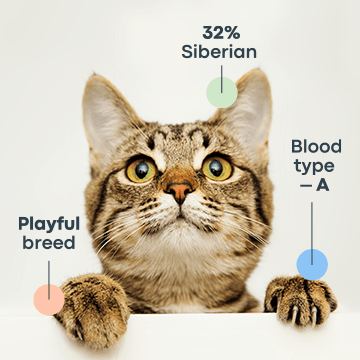Dogs, our loyal and loving companions, hold a special place in our homes and hearts. But when it comes to breeding, it's crucial to understand their reproductive capabilities not just from a biological standpoint, but also through an ethical lens.
How Many Litters Can a Dog Have in Year?
A common question among dog owners and breeders is the number of litters a dog can safely have in a year. While the average female dog is physically capable of having two litters per year, this number can vary significantly. Factors such as breed, health, and size play a crucial role in determining this frequency. Larger breeds, for example, tend to have fewer heat cycles per year compared to smaller breeds. However, the question “How many litters of puppies can a dog have?” isn't just about physical capability; it's equally about ethical responsibility. Most breeders opt to skip cycles to ensure the well-being of the dam, leading to fewer litters per year.
Ethical Breeding Considerations
The ethics of dog breeding are complex and nuanced. It's not just a matter of whether a dog can breed, but whether it should. The answer, for most dogs, is no. With overflowing animal shelters and the issues arising from unethical breeding practices, breeding should be reserved for those who are committed to enhancing the breed in terms of health, temperament, and conformation. Only the top percentage of dogs, those who excel in these areas, should be considered for breeding.
Breed-Specific Litter Frequency: Golden Retrievers
Taking as an example, these popular dogs experience a heat cycle every six months and can have two litters annually. However, responsible breeders recommend limiting the number of litters to four or five across the dam's lifetime. Breeding beyond this limit, especially into old age, can have adverse effects on both the dam and her puppies.
Legal Guidelines for Dog Breeding
From a legal perspective, in the United States, there's no cap on the number of litters a dog can have. However, organizations like the United Kennel Club and the American Kennel Club set their guidelines. The UKC limits the number of litters per dam to four to five, while the AKC doesn't accept puppies from dams younger than 8 months or older than 12 years. These guidelines aim to prevent unethical breeding practices and ensure the health of the dogs involved.
Recommended Breeding Frequency
How many litters can a dog have in a lifetime? The consensus among experts is that a dog should be bred a maximum of four to six times in its lifetime. Breeding beyond this recommendation can lead to health issues for both the dam and the puppies. Factors such as the starting age for breeding (which should be around two years for larger breeds) and the age to stop breeding (around six to seven years) are crucial in determining a safe and ethical breeding frequency.
Health Risks of Excessive Breeding
How many litters can a dog have safely? Breeding a dog too frequently can lead to significant health risks. For the dam, continuous breeding without adequate recovery time can lead to complications like eclampsia and a decline in overall health. Puppies born from dams bred excessively often face health challenges themselves, such as being underweight or having congenital defects. It's crucial for breeders to prioritize the health of the dam and her puppies over the number of litters produced.
Breeding Intervals: Timing Matters
Deciding when to breed a dog after a litter is a topic of debate among experts. Some advocate for back-to-back breeding, citing health benefits such as reduced chances of certain cancers. Others recommend waiting for at least one heat cycle to give the dam time to recover fully. Factors such as the dam's overall health and previous pregnancy complications should guide this decision. The key is to avoid overbreeding while ensuring the health and wellbeing of the dam.
Male Dogs' Reproductive Capacity
While much focus is on the breeding capacity of female dogs, it's important to consider male dogs too. An intact male dog can theoretically sire an unlimited number of litters. However, responsible breeding practices involve considering the dog's health and avoiding overuse to maintain genetic diversity. Breeding male dogs should be in excellent health and free from genetic defects to ensure the wellbeing of their offspring.
Old Age and Breeding
The appropriate age to stop breeding a dog varies by size and breed. Smaller breeds typically retire from breeding earlier, around 5 to 6 years, while larger breeds may continue up to 7 or 8 years. Breeding dogs beyond this age can risk the health of both the mother and the puppies. Signs like decreasing litter sizes and increased stillbirths indicate it's time to retire a breeding dog.
Conclusion
Understanding the reproductive capabilities and limitations of dogs is crucial for any breeder or dog owner considering breeding. It's not just about the number of litters a dog can have, but also about ensuring the health and welfare of the dogs involved. Adhering to ethical breeding practices, considering the legal guidelines, and prioritizing the health of both the dam and her puppies are essential steps towards responsible dog breeding. Remember, breeding should always be undertaken with care, knowledge, and a sense of responsibility.
Frequently Asked Questions
How often can a dog safely have litters?
Ideally, a healthy female dog should only have 4 to 6 litters in her lifetime to ensure her health and the health of the puppies.
At what age should dogs start breeding?
Small female dogs should start breeding at about 12 to 18 months, while large breeds should start around two years of age.
Is it safe to breed a dog every heat cycle?
Breeding every heat cycle is not recommended. Skipping cycles allows the dam to recover fully and ensures healthier litters.






